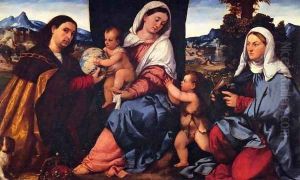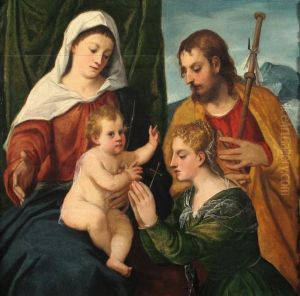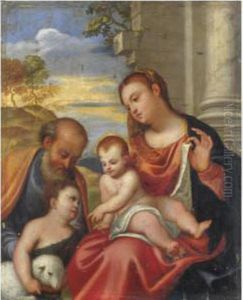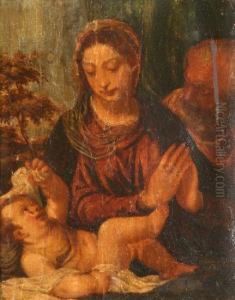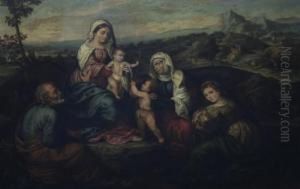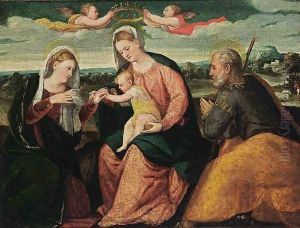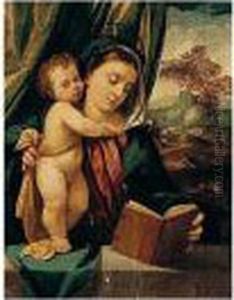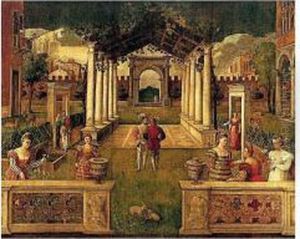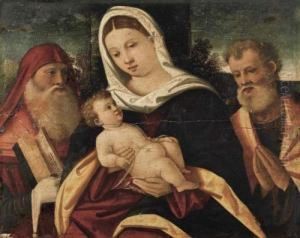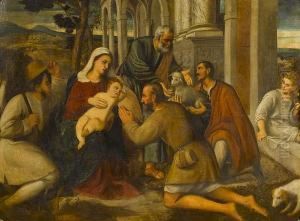Bonifacio Veronese (Pitati) Paintings
Bonifacio de' Pitati, also known as Bonifacio Veronese or Bonifacio Veneziano, was an Italian Renaissance painter who was active in Venice during the early 16th century. Born in Verona in 1487, he moved to Venice at a young age, which was a vibrant center for the arts during that period. Bonifacio was deeply influenced by the works of other Venetian masters such as Giovanni Bellini and Giorgione, and he is often associated with the Venetian school of painting.
Bonifacio's style is characterized by his rich color palette and the serene and harmonious compositions, which were typical of the Venetian Renaissance. He was particularly known for his religious works, altarpieces, and narrative scenes from the Bible, but he also painted portraits and mythological subjects. His paintings are noted for their luminous quality and the gentle, poetic atmosphere he was able to convey.
Among his notable works are the large altarpieces for the churches of Venice and its territories, which were admired for their grandeur and the clarity of their narratives. Bonifacio was also skilled in smaller devotional paintings, which were popular among private patrons.
Bonifacio had a successful career and his workshop was one of the busiest in Venice. His works were widely appreciated for their decorative appeal and narrative clarity. He is known to have influenced later Venetian painters, including Jacopo Tintoretto. Despite his influence, Bonifacio's reputation was somewhat overshadowed by the towering figures of Titian and Tintoretto in the later years.
Bonifacio Veronese passed away in 1553 in Venice. Today, his artworks are housed in various museums and collections around the world, and he is recognized as an important figure in the history of Venetian painting during the Renaissance.

